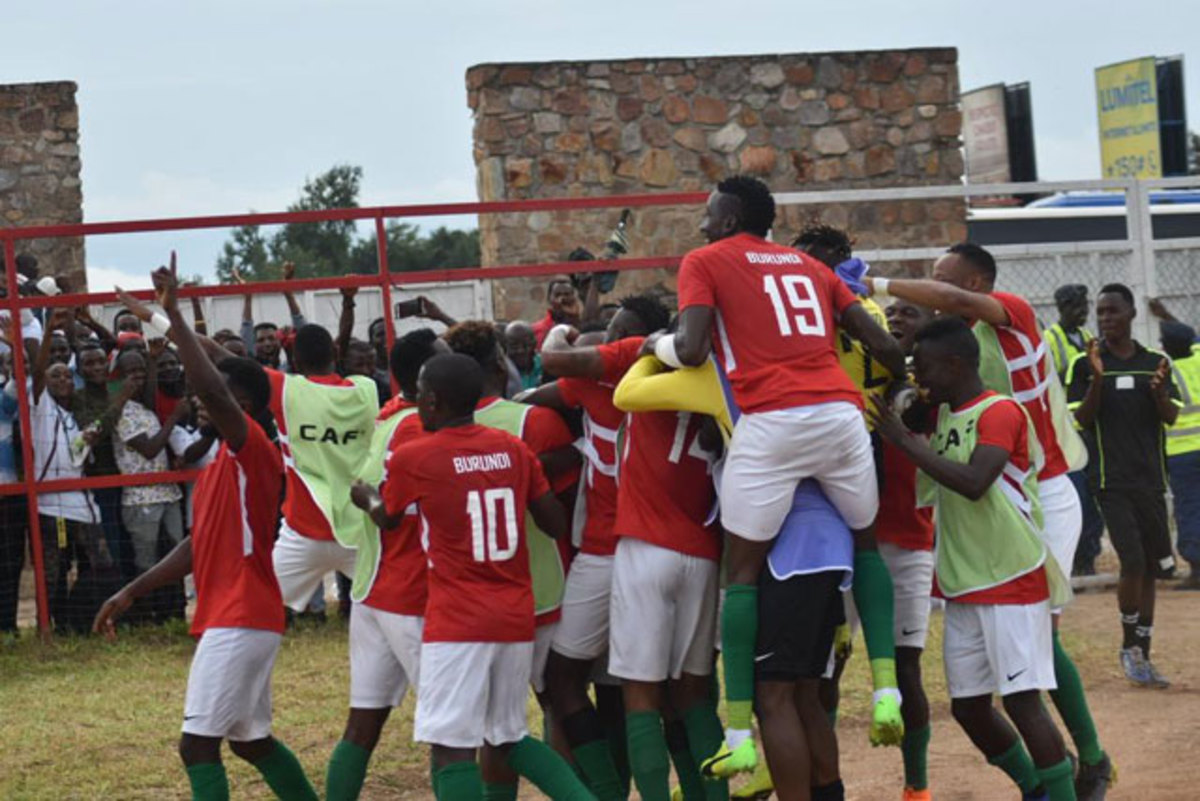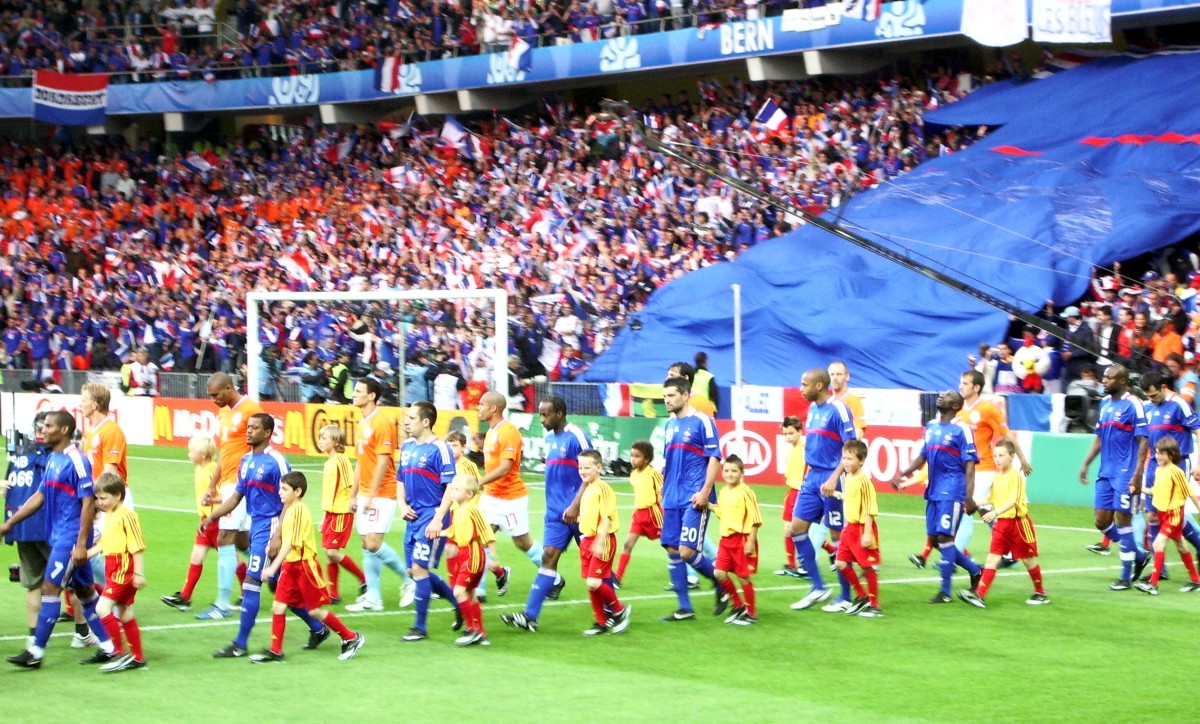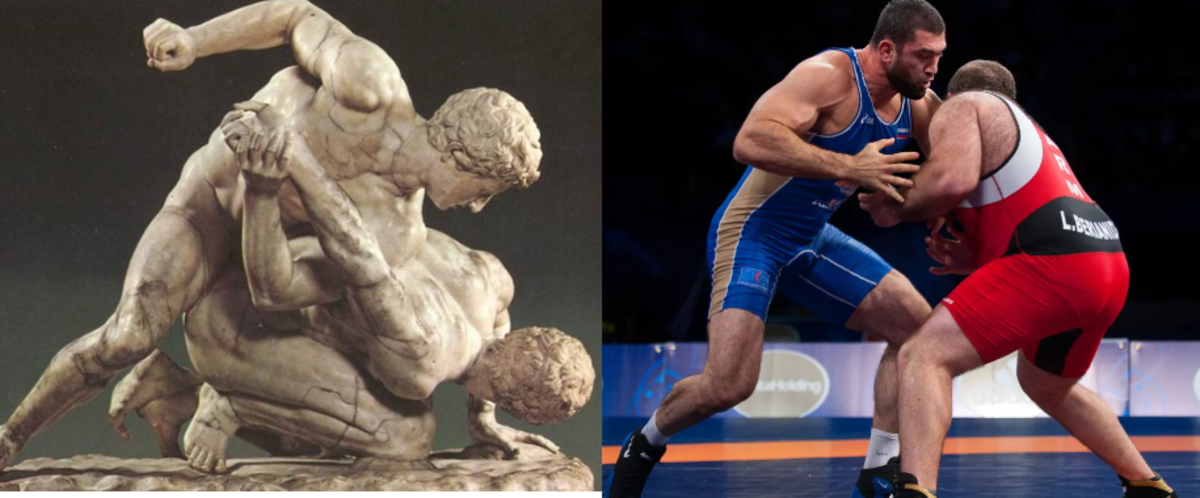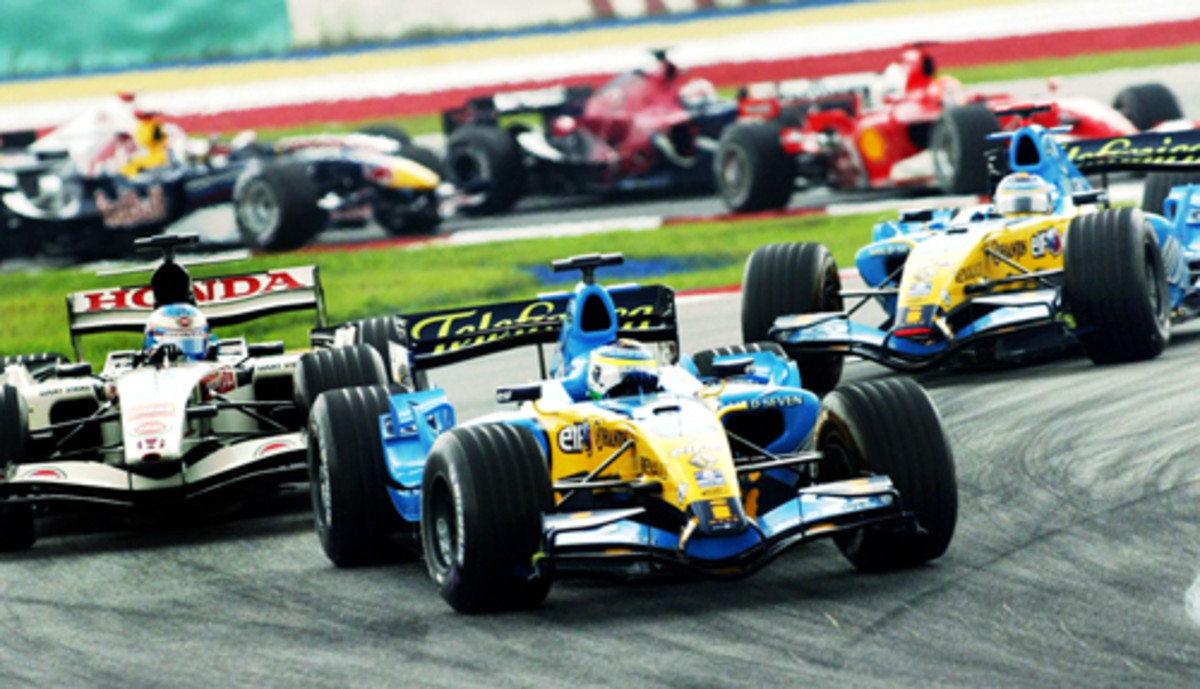Estonia's Sporting Cathedral: A Le Coq Arena
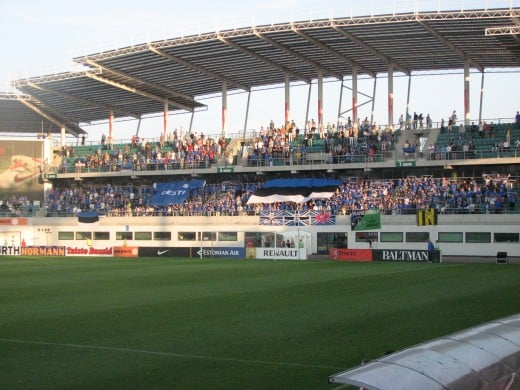
Sometimes, a stadium that stands out in the world is not about the size but rather the volume of people's interest in a stadium to be relevant. No country perhaps has a better example than Estonia, as the nation struggled to find its identity in the mid-1990s following independence.
Estonia managed to spark interest among its people in 1999, even if its first significant stadium only seated 5000 people. The reward for that interest was a literal "railway" toward a new sporting cathedral: Lilleküla Stadium, commonly known as A Le Coq Arena in Tallinn, Estonia. Since 2001, the home of Estonia's football team has become the springboard for players nationwide at national and international level.
The stadium's size typically seats up to 10000 people, but in 2017, the capacity reached 15000 thanks to the stadium's most significant match ever hosted. In 2018, A Le Coq Arena hosted the UEFA Super Cup Final, the first time an Estonian stadium hosted a major senior club final.
Action from Tallinn in 2001
Excitement Looms
Before 2001, Kadriorg Stadium was Estonia's primary football venue that seated 5000 people. Estonia needed a place to host matches against the world's best nations - the first opportunity coming on June 2, 2001, as tickets sold out quickly for Estonia's game against the Netherlands in a 2002 FIFA World Cup qualifier.
The Netherlands needed a win, especially in Estonia, to keep up with Portugal and the Republic of Ireland. Nevertheless, Estonia hung in the game for an hour, prompting Dutch coach Louis van Gaal to make two substitutions - the more notable being Ruud van Nistelrooy on for Patrick Paauwe. Estonia received its reward in the 65th minute, beginning with Raio Piiroja; his pass to Marko Kristal then found Andres Oper. Estonia's all-time leading scorer, Oper broke free from two Dutch players and rifled past Dutch goalkeeper Edwin van der Saar. The goal sparked celebrations in the stadium, and players celebrated near a corner flag.
The lead remained only three minutes: Piiroja was equally responsible for allowing the tying goal. Dutch striker Frank de Boer launched a long left-footed shot in the middle of Estonia's half of the pitch, accommodating a slight deflection of Piiroja's head. That deflection struck the crossbar's underside, and the ball crossed the white line.
But Indrek Zelinski restored Estonia's advantage with only 14 minutes remaining, and Estonia seemed to have scalped a crucial victory. That was until van Nistelrooy and Patrick Kluivert tallied three goals late in the match, scoring the game-winning goal.
One thing came out of this match: Estonia had a home; it was proud, and its players would represent their country with pride, which began at A Le Coq Arena.
Did You Know?
Estonia's first match at A Le Coq Arena in 2001 was also the same match that Estonian center back Taavi Rähn earned his first international cap. Rähn achieved this feat after replacing midfielder Kert Haavistu in the 69th minute.
Bringing Opportunity
For 16 years, many elite countries visited at A Le Coq Arena as part of their qualifying campaigns in Europe. Many games did result in visitors winning, but Estonia recorded its first historic result on Mar. 27, 2002. Estonia hosted Russia in a friendly, the visitors preparing for the 2002 FIFA World Cup. Vladimir Bestchastnykh's 18th-minute goal canceled out his goal in the 10th minute, but Andres Oper scored with four minutes remaining in regulation. The 2-1 victory was a pivotal moment for Estonia in a match where Oper set an unprecedented standard.
Estonia drew 1-1 to Russia when the teams met again at A Le Coq in qualifying for the 2006 FIFA World Cup. During this campaign, Oper was Estonia's best scoring player, having recorded seven goals in qualifying, tied for second-most in the group. Oper's total included four goals at A Le Coq Arena: Luxembourg (Sept. 4, 2004), Slovakia (Mar. 26, 2005), Liechtenstein (June 4, 2005) and Latvia (Sept. 3, 2005).
Oper earned 134 caps for Estonia, with his 100th coming in a Euro 2008 qualifying match: a 1-0 home loss to Israel. But when he won his final cap, coming against Gibraltar, in a 1-1 home draw, Oper finished with 38 goals - the most by an Estonian player. That tally also included two goals scored against Canada in a 2-1 victory at A Le Coq Arena on Mar. 29, 2003.
Canada and Estonia met again five years later that proved memorable because of the wintry conditions. Vjatseslav Zahovaiko sealed the game with his first goal for Estonia since 2004 in Estonia's 2-0 victory.
Wintry Wonderland in 2008
Rematch with the Dutch 12 Years Later
Scoring Establishments - No Matter the Stakes
He substituted for Zahovaiko in the 66th minute during a 1-1 draw against New Zealand on May 31, 2006; nearly 11 years later, Konstantin Vassiljev stands as his nation's third-highest goalscorer and is also expected to reach 100 caps by the end of 2017.
Some of Vassiljev's goals at A Le Coq Arena have come regardless of the stakes. His goal against Belgium in a 2010 FIFA World Cup capped off Estonia's campaign with a 2-0 victory on Oct. 14, 2009. One year later, Vassiljev had his two-goal game for Estonia, coming in a 3-3 draw against Uzbekistan, its opponents preparing for the 2011 Asian Cup.
Vassiljev, along with Zahovaiko, helped Estonia notch an even better result in 2011, the duo scoring four minutes apart to hand Estonia a 2-0 upset against Uruguay on Mar. 24, 2011. Uruguay was coming off a fourth-place finish at the 2010 World Cup. That win came four days before Vassiljev's tying goal against Serbia proved pivotal in Estonia's Euro 2012 qualifying campaign. In 2017, Vassiljev also scored in another major upset as Estonia defeated Croatia 3-0.
However, Vassiljev established himself to perhaps be Estonia's best goalscorer in 2013, when Estonia hosted the Netherlands once again as the teams met in a 2014 FIFA World Cup qualifier. After giving up an early goal, Estonia stayed focused, and Vassiljev scored twice. Similar to 2001, Estonia hoped to notch a significant dent in the Netherlands' qualification to the World Cup. However, Estonia allowed a penalty kick.
The game finished a 2-2 draw, but Vassiljev's goal earned the player the 2013 Estonia Silverball, a yearly award that Estonian Football Journalists' Club award to Estonia's best goal. In 2013, Vassiljev became the first four-time winner of the prize. Vassijlev won his fifth trophy three years later, thanks to his goal against Gibraltar in a 2018 FIFA World Cup qualifier that Estonia won 4-0.
It was not the first time Gibraltar visited A Le Coq Arena. In 2014, Gibraltar met Estonia at A Le Coq Arena as part of a home-and-home series since Gibraltar became UEFA's 54th member in 2013. That 1-1 draw is considered an unofficial match in FIFA, similar to another game three years earlier. If upsetting Uruguay was euphoria, then Estonia's match against the Basque Country was a low ebb. A 2-1 to the Basque Country started a string of six straight losses for Estonia across all events.
More came for Estonia, especially come the end of 2011.
Longevity and Inspiration
Thirteen players have earned over 100 caps for Estonia, and the common factor among all these players was having represented Estonia at A Le Coq Arena; for some players, the journeys to 100 caps began on June 3, 1992: Estonia's first official FIFA match as it drew 1-1.
When he reached 100 caps in a World Cup qualifier in Limassol, Cyprus, midfielder Marko Kristal, who scored his ninth (and final) goal for Estonia, became Europe's youngest player to amass 100 caps. When he played his last game, Kristal amassed 143 caps, most for an Estonia player at the time. His final cap came in a friendly at A Le Coq Arena, but Norway won in Kristal's last game 2-1 on Apr. 20, 2005.
Kristal found success as a manager at the club and in 2013 guided FC Levadia Tallinn to the league title with 30 victories. That tally included wins at A Le Coq Arena, also home to FC Flora Tallinn (on Apr. 13, a 3-0 victory and Aug. 9 a 2-1 victory). Kristal's assistant for that season was Zelinski.
Zelinski earned 103 total caps, but his last four came in six years after 2003. On Mar. 31, 2004, Zelinski earned his 100th cap at home, but Estonia lost 1-0 to Northern Ireland. Three years later, on Aug. 22, 2007, Zelinski gave Estonia its first win in Euro 2008 qualifying at home. Despite scoring the winning goal in stoppage time. Zelinski celebrated by removing his shirt. Zelinski, already on a yellow card, would be shown a second yellow for the celebration and the subsequent red card.
The goal against Andorra in 2007 was Zelinski's 27th and final goal for Estonia, which ranks him second in his nation's scoring.
2009 marked Estonia's 100th anniversary of its footballing history. It was also the year that marked the ends of two notable players in four days at A Le Coq Arena.
Farewell Match for Reim
Fitting Farewells
2009 marked Estonia's 100th anniversary of its footballing history. It was also the year that marked the ends of two notable players in four days at A Le Coq Arena.
He played 34 minutes against Equatorial Guinea during the 3-0 victory. When Vassiljev replaced him, Martin Reim left the game as Estonia's all-time caps leader. Reim, whose 100th cap came in Estonia's 4-2 loss to the Netherlands in 2001, finished with 157 caps, the most for a European player at the time of his retirement. Reim took over as Estonia's manager on Sept. 14, 2016, following Estonia's 5-0 loss at Bosnia-Herzegovina in Zenica. Reim's first two games as the new manager came at A Le Coq Arena: Estonia winning 4-0 against Gibraltar before losing 2-0 to Greece.
Days after Reim's last game, Estonia's starting goalkeeper took his turn to call it a career. In 18 years, Mart Poom established the goalkeeper position for Estonia. Despite losing 56 percent of the games he appeared in, Poom helped Estonia rise following its independence, and in 2003 Poom was voted as Estonia's best player during the UEFA Jubilee Awards. Poom was a part of Estonia's early struggles as newcomers to becoming a fan favorite in Estonia and England, where he made a name at Derby County and Sunderland. Poom's 120th cap against the same nation he earned his 100th cap. Unlike the 4-0 loss in Leiria Portugal, Poom held Portugal to a goalless draw, winning the goalkeeper his first clean sheet since 2004.
Three years after appearing against Andorra, Zelinski earned his 103rd and final cap in 2010. A journey that started at Titan Stadium in Fullerton, Calif. in a 4-0 loss at the United States ended with Zelinski helping break a drought against one nation. The last time Estonia defeated Finland, Richard Kuremaa had his nation one game away from the 1938 FIFA World Cup. Oper's fifth-minute goal, combined with Sander Post's first goal for Estonia in the 55th, gave Estonia its first victory against Finland since 1937.
Home: Where the Best Goal Can Come
Year (Date of Goal)
| Player
| Opponent
| Competition
|
|---|---|---|---|
2001 (June 2)
| Andres Oper
| Netherlands
| 2002 FIFA World Cup Qualification
|
2002 (August 21)
| Teet Allas
| Moldova
| Friendly
|
2005 (March 26)
| Andres Oper
| Slovakia
| 2006 FIFA World Cup Qualification
|
2007 (August 22)
| Indrek Zelinski
| Andorra
| Euro 2008 Qualification
|
2008 (June 4)
| Vjateslav Zahovaiko
| Faeroe Islands
| Friendly
|
2012 (August 15)
| Konstantin Vassiljev
| Poland
| Friendly
|
2013 (September 6)
| Konstantin Vassiljev
| Netherlands
| 2014 FIFA World Cup Qualification
|
2014 (June 7)
| Siim Luts
| Tajikistan
| Friendly
|
2015 (November 17)
| Sander Puri
| St. Kitts and Nevis
| Friendly
|
2016 (October 7)
| Konstantin Vassiljev
| Gibraltar
| 2018 FIFA World Cup Qualification
|
2017 (September 3)
| Mattias Käit
| Cyprus
| 2018 FIFA World Cup Qualification
|
2018 (October 15)
| Siim Luts
| Hungary
| 2018-19 UEFA Nations League C
|
Since the stadium opened in 2001, A Le Coq opened in 2001 has been many goals that have been awarded the Estonian Silverbal. A panel of national journalists award this to the player who scored Estonia's best goal.
Scoreless Stalemates Suffice
A Le Coq Arena has hosted only two matches in Europe's oldest organized tournament for European teams: Baltic Cup. Both matches, in 2003 & 2016, saw Estonia host Latvia. The visiting team's scoreless draws in both games saw Latvia clinch the Baltic Cup.
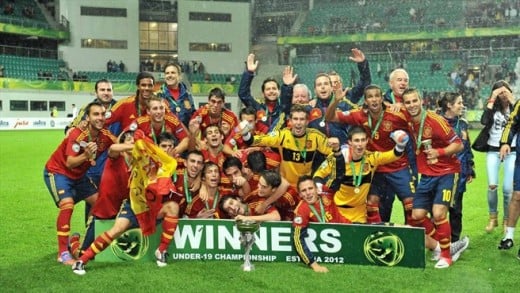
Youth Emergence in the Summer of 2012
In 2011, Tallinn was one of the two cities designated as a European Capital of Culture. The designation provided Tallinn opportunities for numerous sporting events for the upcoming future. That experience also proved to be Tallinn's litmus test as n 2012, Estonia hosted its first UEFA tournament ever. The Under-19 Championships showcased rising young stars across four venues; that included A le Coq Arena, which hosted six matches total, including the two semifinals and the final.
Spain's played four matches at A Le Coq Arena, its first match being against Portugal. Jese Rodriguez Ruiz emerged as a goal-scoring threat as the player required only 48 minutes to notch a hat trick. Portuga responded after each goal, the third coming courtesy of a stoppage-time goal from Joao Mario as Portugal salvaged a point. That game was the middle of three group stages games. Portugal had kicked off this tournament with a 3-0 victory before Spain ended Estonia's competition with a 2-0 win. Portugal missed out on the semifinals, where both games needed extra time. Greece followed up a defeat of Greece by defeating England 2-1, with Charalambos Lykogiannis put Greece ahead, and they were on their way to a final.
The first semifinal set the stage for a mouth-watering encounter featuring Spain and France. After France scored courtesy of a Samuel Umtiti goal, Spain proved their mettle with two goals in 14 minutes, courtesy of Gerard Deulofeu and Paco Alcacer. A third successive final appearance was in the cards, only for Umtiti to force extra time with a stoppage-time goal. Each team scored in the second half of extra time, the second goal seeing Paul Pogba equalize with three minutes remaining. Penalty kicks proved cruel for France. Despite Jose Campaña missing Spain's first attempt, Umtiti and Geoffrey Kondogbia had their efforts prevented, setting up Delofeu's winning shot and a rematch from the group stage.
The 2012 final became a rematch of the first game of the tournament that had occurred in Haapsalu. Spain defeated Greece 2-1 earlier in a group stage game in Happsalu, and it would defeat Greece against by the odd goal in a tense final. Fittingly, Spain's first goalscorer of the tournament, Jese, added to his hat trick against Portugal, and his goal represented his fifth of the competition. Spain established itself as a world-power in European football at the senior level; now at youth level, a dynasty continued with Spain winning for a second successive season and sixth overall in 11 seasons.
A Stroke of Brilliance
Notable Club Qualifiers
To date, no Estonia club has participated in the group stage of a major UEFA club competition. That is not to say Estonian clubs stood on the cusp of history in 2006 and 2013.
While Flora Tallinn managed scoreless draws against Lyn Oslo and Brondby in qualifiers, Levadia Tallinn managed an even bigger shock. On Aug. 24, 2006, Levadia Tallin was in a good situation against Dutch club FC Twente: a scoreless draw or victory would send the club to the UEFA Cup First Round and one step close to history. A former goal-scoring champion help notch the biggest upset in that year's second qualifying round. Konstantin Nahk's goal 35 minutes into the game proved decisive to send Levadia into the next round.
On paper, this was the biggest upset in that qualifying. The runners-up of the 2005 Meistriliga had the lowest coefficient (0.88) for a team to qualify for the UEFA Cup First Round after starting in the tournament first qualifying round; in contrast, FC Twente had the highest coefficient (19.640) for an eliminated team from the competition.
Levadia Tallinn's reward came against Newcastle United. Levadia hoped to keep the run going, but an early goal from Antoine Sibierski set the tone for this two-legged encounter. The 1-0 loss ended Levadia Tallinn's chance at history for Estonia. It would be seven years later before another meaningful game at A Le Coq Arena.
This time, it was Nõmme Kalju, winners on the 2012 league title, that had the opportunity. Because Hiiu Stadium seats only 650, UEFA regulations prohibited Nõmme Kalju to play its European club matches there. A Le Coq Arena became the only suitable option as Nõmme Kalju began qualification in the second qualifying phase of the 2013-14 UEFA Champions League against Finnish champions HJK Helsinki. Against HJK (also a previous group stage participant in 1998), Nõmme Kalju won 2-1, setting up a match-up against Czech Republic's champions Viktoria Plzen.
A Le Coq Arena hosted the first leg, where home advantage evaporated after only two minutes. Marian Cisovsky scored two minutes into the game; Cisovsky also had two more goals, including a stoppage-time goal to complete his hat trick as Nõmme Kalju lost 4-0 with Plzen. Despite the loss, Nõmme Kalju still had one more match in an attempt to play European football come September; however, Ukrainian club Dnipro Dnipropetrovsk would win at A Le Coq and deny the Estonia club a piece of history.
Winning in Dramatic Style
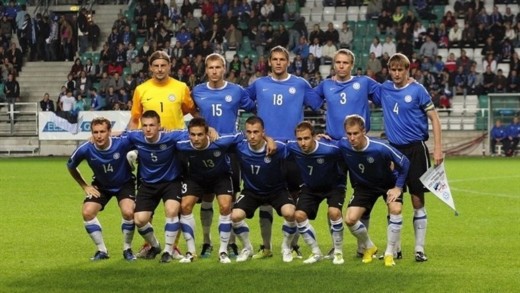
Kicking Off Europe's Road
A Le Coq Arena kicked off Europe's club competition in 2018 when Atletico Madrid defeated Real Madrid 4-2 in extra time. Kicking off a season happened in the past in A Le Coq Arena. This nation also kick-started Europe's journey to Austria and Switzerland for the 2008 edition as well as Europe's road to Poland and Ukraine for the 2012 edition. This stadium was where the first goals of qualifying occurred in both European qualifying campaigns.
On Aug. 16, 2006, Estonia hosted FYR Macedonia to kick off the 2008 edition; the host nation had the first opportunity thanks to Joel Lindpere and Viikmäe, only for Macedonia's Igor Mitreski to half the attack with a sliding challenge. Macedonia ended up dominating the possibilities for the rest of the first half, especially nearly opening the scoring, but not before Ilce Naumoski had his goal disallowed for offsides in the 33rd minute.
With 74 minutes elapsed, Goce Sedloski scored the first of what would represent 839 goals in qualifying for the 2008 European Championships. However, Estonia nearly salvaged a draw after Nikolovski had stopped Andrei Stepanov's shot. With the ensuing corner, Estonia hoped for magic from goalkeeper Poom; he, three years earlier, scored a tying goal for Sunderland against his former club Derby County. However, Poom's attempt went wide, and FYR Macedonia secured the three points.
A Le Coq Arena was one of three venues that hosted matches to kick off Euro 2008 in 2006. On Aug. 11, 2010, A Le Coq Arena was the sole venue to kick off Euro 2012.
As in 2006, the visiting team scored the first goal of qualifying, courtesy of Jóan Símun Edmundsson, the 26th-minute strike represented his initial goal for the Faeroe Islands. It seemed that the Faeroe Islands, also considered minnows in Europe, were on their way to a shock result. Estonia, for its part, influenced the game on its head with Kaimar Saag and Piiroja scoring stoppage-time goals.
Seldom did people imagine that a year after that 2-1 victory, Estonia was at the apex of its footballing history. That run also featured an impressive 4-1 win over Northern Ireland in another qualifier. Although it lost 2-0 to Ukraine in a home friendly, Estonia would get a chance to host its most important match to date: a Euro 2012 playoff. That was in part to Slovenia's 1-0 victory over Serbia, as Estonia held off Serbia for the playoff spot. Estonia on a path that few experts saw coming for the next 15 months. But one thing is sure, A Le Coq Arena Stadium will undergo a massive expansion, and Estonia, at long last, will reap the rewards for a stadium that has allowed a city and nation that many thought would never be possible.
This content is accurate and true to the best of the author’s knowledge and is not meant to substitute for formal and individualized advice from a qualified professional.
© 2017 Antonio Martinez

